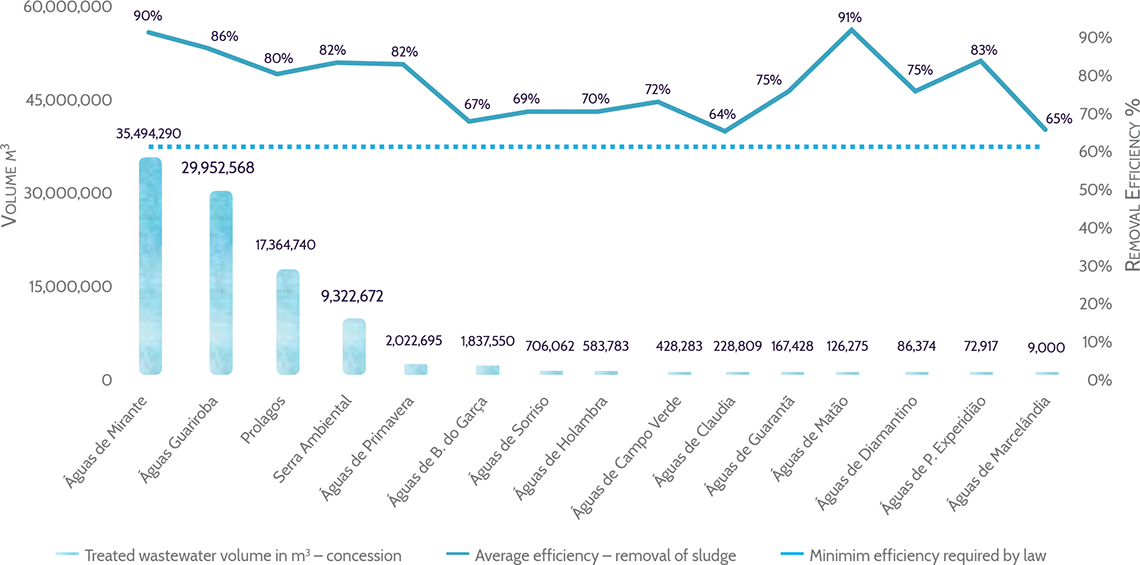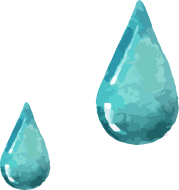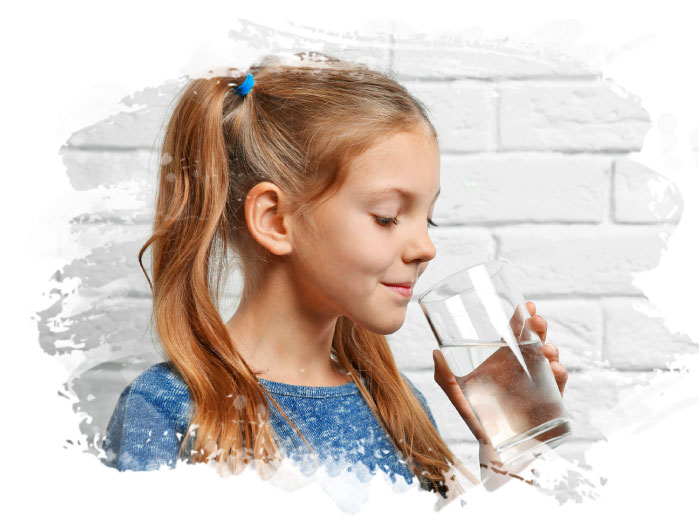Water
G4-DMA WaterDuring the year, the Company produced approximately 217 million cubic meters of water for its operations. This volume – coming from surface water (rivers, lakes and lagoons) and groundwater (aquifers and artesian wells) – was collected in accordance with the law, allowing for use of water resources and in a way that does not harm water sources. G4-EN8
Total water withdrawn by source (m3) G4-EN8
| Surface water1 | Groundwater2 | Total | |||||||
|---|---|---|---|---|---|---|---|---|---|
| 2016 | 2015 | 2014 | 2016 | 2015 | 2014 | 2016 | 2015 | 2014 | |
| Prolagos | 37,375,874 | 37,053,368 | 35,515,384 | - | - | - | 37,375,874 | 37,053,368 | 35,515,384 |
| Águas Guariroba | 43,917,400 | 41,925,095 | 48,123,936 | 40,386,519 | 41,002,534 | 39,388,464 | 84,303,919 | 82,927,629 | 87,512,400 |
| Nascentes do Xingu3 | 24,462,982 | 16,290,083 | 6,963 | 28,843,153 | 37,444,723 | 16,929 | 53,306,135 | 53,734,806 | 23,892 |
| Águas de Timon | 172,800 | - | - | 18,643,365 | 18,963,648 | - | 18,816,165 | 18,963,648 | - |
| Águas de Matão | - | - | - | 9,488,974 | 9,132,301 | 5,160,000 | 9,488,974 | 9,132,301 | 5,160,000 |
| Águas de São Francisco do Sul | 5,474,602 | 4,634,2605 | - | - | - | - | 5,474,602 | 4,632,260 | - |
| Águas de São Francisco | - | - | - | 4,012,144 | 5,032,657 | 4,660 | 4,012,144 | 5,032,657 | 4,660 |
| Águas de Holambra4 | 1,565,078 | - | - | 89,166 | - | - | 1,654,244 | - | - |
2. Aquifers and artesian wells.
3. Since 2015, the Barra do Garças operation has been incorporated into Nascentes do Xingu.
4. Concession granted in late 2015.
5. Number revised and corrected for this edition of the report.
In 2016, 98,358,466 cubic meters of wastewater were treated. Águas de Mirante accounts for 36% of this volume, followed by Águas Guariroba (30%), Prolagos (18%) and Serra Ambiental (10%). The units maintain strict standards for removal of organic matter – in excess of what is required by environmental laws – and in most cases, efficiency is over 80%, which confirms the quality of effluent treatment by the Company.
Efficiency rates removal of organic material (BOD) at WWTSs and at Company units

Total water discharge, broken down by quality and destination1 G4-EN22
| 2016 | 2015 | |||||
|---|---|---|---|---|---|---|
| Volume discharged (m3/year of treated wastewater) | Location discharged | Water quality – Biochemical Oxygen Demand (BOD) – % | Volume discharged (m3/year of treated wastewater) | Location discharged | Water quality – Biochemical Oxygen Demand (BOD) – % | |
| Prolagos | 17,364,740 | Laguna Araruama, Córrego Malhada (affluent of Rio Una) and Canal da Marina | 80 | 16,822,832 | Laguna Araruama, Córrego Malhada (affluent of Rio Una) and Canal da Marina | 75 |
| Águas Guariroba | 29,952,568 | Rio Anhanduí and Córrego Imbirussu |
75 | 29,163,369 | Rio Anhanduí and Córrego Imbirussu |
72 |
| Águas do Mirante | 35,494,290 | Rio Piracicaba, Ribeirão Tijuca Preta, Ribeirão Anhumas and Ribeirão Piracicamirim | 90 | 37,986,825 | Rio Piracicaba, Ribeirão Tijuca Preta, Ribeirão Anhumas and Ribeirão Piracicamirim | 88 |
| Águas de Matão | 126,275 | Rio São Lourenço do Turvo | 91 | 120,778 | Rio São Lourenço do Turvo | 82 |
| Águas de Holambra3 | 538,783 | Ribeirão Cachoeira | 70 | - | - | - |
| Barra do Garças (MT)3 | 1,837,550 | Rio Araguaia and Córrego Fundo | 67 | - | - | - |
| Campo Verde (MT)2 | 428,283 | Rio das Motes | 72 | 245,222 | Rio das Motes | 72 |
| Cláudia (MT)2 | 228,809 | Ribeirão Leda | 64 | 164,908 | Ribeirão Leda | 67 |
| Guarantã do Norte (MT)2 | 167,428 | Affluent of Rio Braço Sul | 75 | 65,596 | Affluent of Rio Braço Sul | 84 |
| Pedra Preta (MT)2 | 72,646 | Córrego Águas Claras | 69 | 39,435 | Córrego Águas Claras | 62 |
| Porto Esperidião (MT)2 | 72,917 | Rio Aguapeí | 83 | 12,974 | Rio Aguapeí | - |
| Primavera do Leste (MT)2 | 2,022,696 | Córrego Traíras | 82 | 1,365,525 | Córrego Traíras | 74 |
| Sorriso (MT)2 | 706,082 | Córrego Gonçalves and Affluent of Rio Lira | 70 | 621,486 | Córrego Gonçalves and Affluent of Rio Lira | 82 |
| Serra Ambiental3 | 9,322,672 | Canal dos Escravos, Ilha do Lameirão, Lagoa Jacuném, Lagoa Maringá, Córrego Barro Branco, Córrego Irema, Ribeirão Brejo Grande, Rio Jacareípe, Córrego Jacaré, Córrego Laranjeiras, Córrego Manguinhos, Rio Rei dos Magos, Affluent of Rio Dr. Robson and Córrego Garanhões | 81 | - | - | - |
2. Municipalities served by Nascentes do Xingu.
3. Units began wastewater treatment operation in 2016.
In some regions, Aegea also reuses rainwater and water from washing WTS filters. At Armação de Búzios (RJ), São Pedro da Almeida and Iguaba Grande (RJ), Prolagos – in partnership with the municipal government – also withdraws water from secondary and tertiary WWTSs. This resource, which would otherwise be discarded, is therefore treated and contributes to the public supply. In total, the volume of water recycled accounts for 34% of water consumed during the year. G4-EN10

Total volume of water recycled and reused (m3) G4-EN10
| 2016 | 2015 | |
|---|---|---|
| Águas Guariroba | 832,200 | 409,750 |
| Águas do Mirante | 262,800 | 262,800 |
| Prolagos | 14,440 | 26,280 |
| Águas de São Francisco do Sul | 41,472 | 41,472 |
| Barra do Garças (MT)1 | 131,170 | 65,700 |
| Poconé (MT)1 | 16,256 | 6,844 |
| Porto Esperidião (MT)1 | 6,746 | 8,213 |
| Primavera do Leste (MT)1 | 84,238 | 33,763 |
| Serra Ambiental2 | 9,300 | - |
| Total | 1,398,622 | 854,822 |
2. Concessions gained in 2016.






